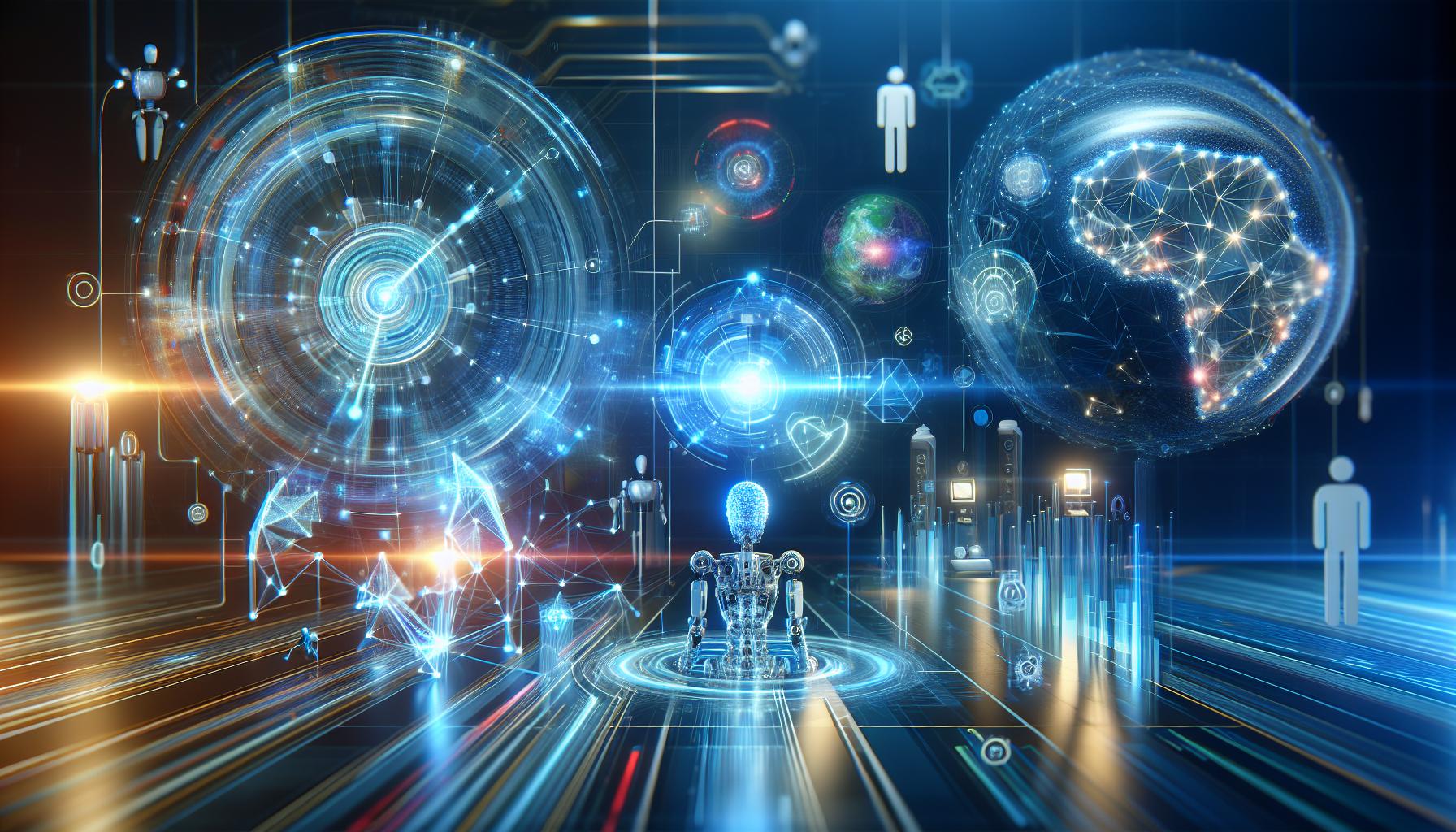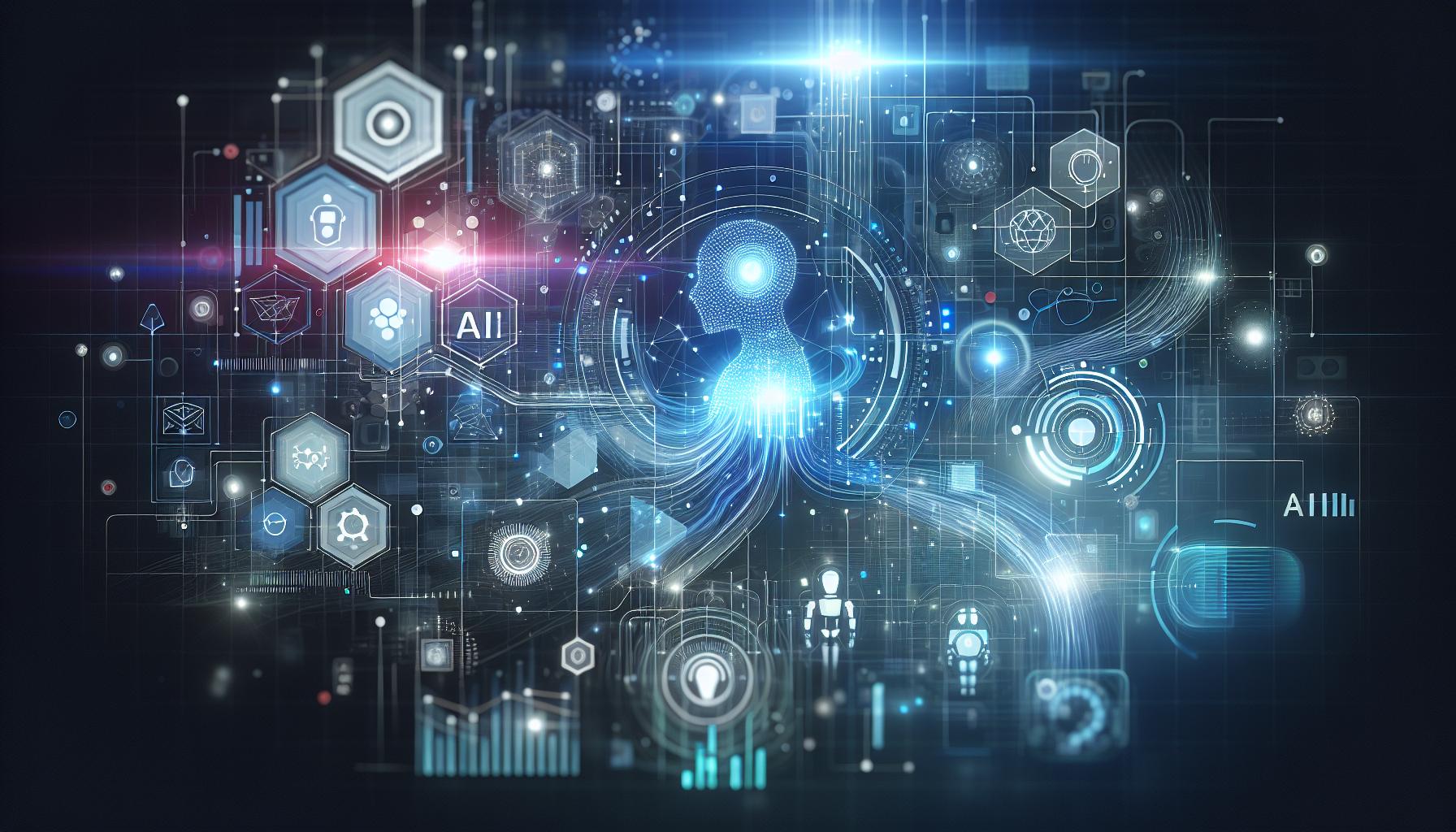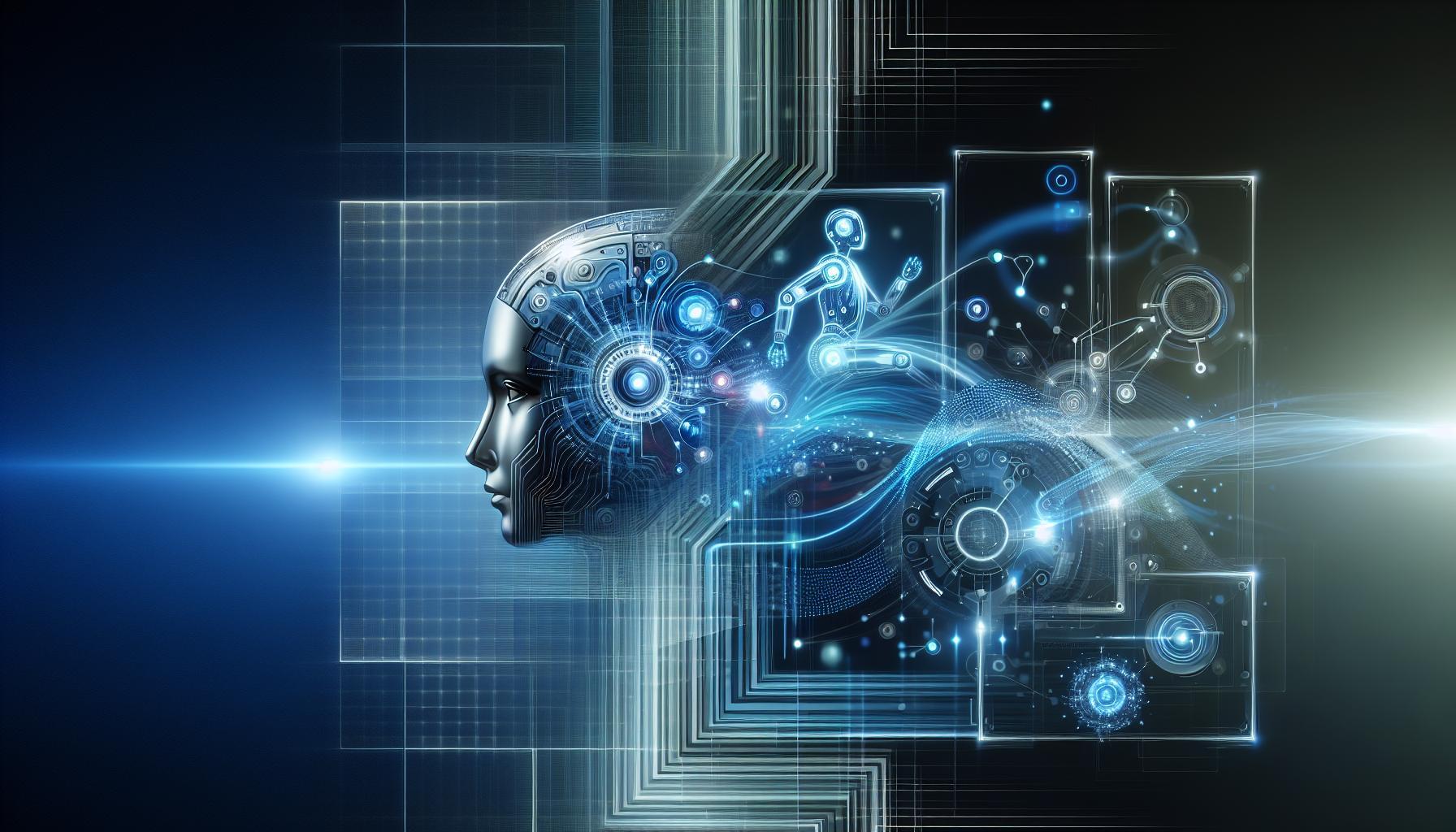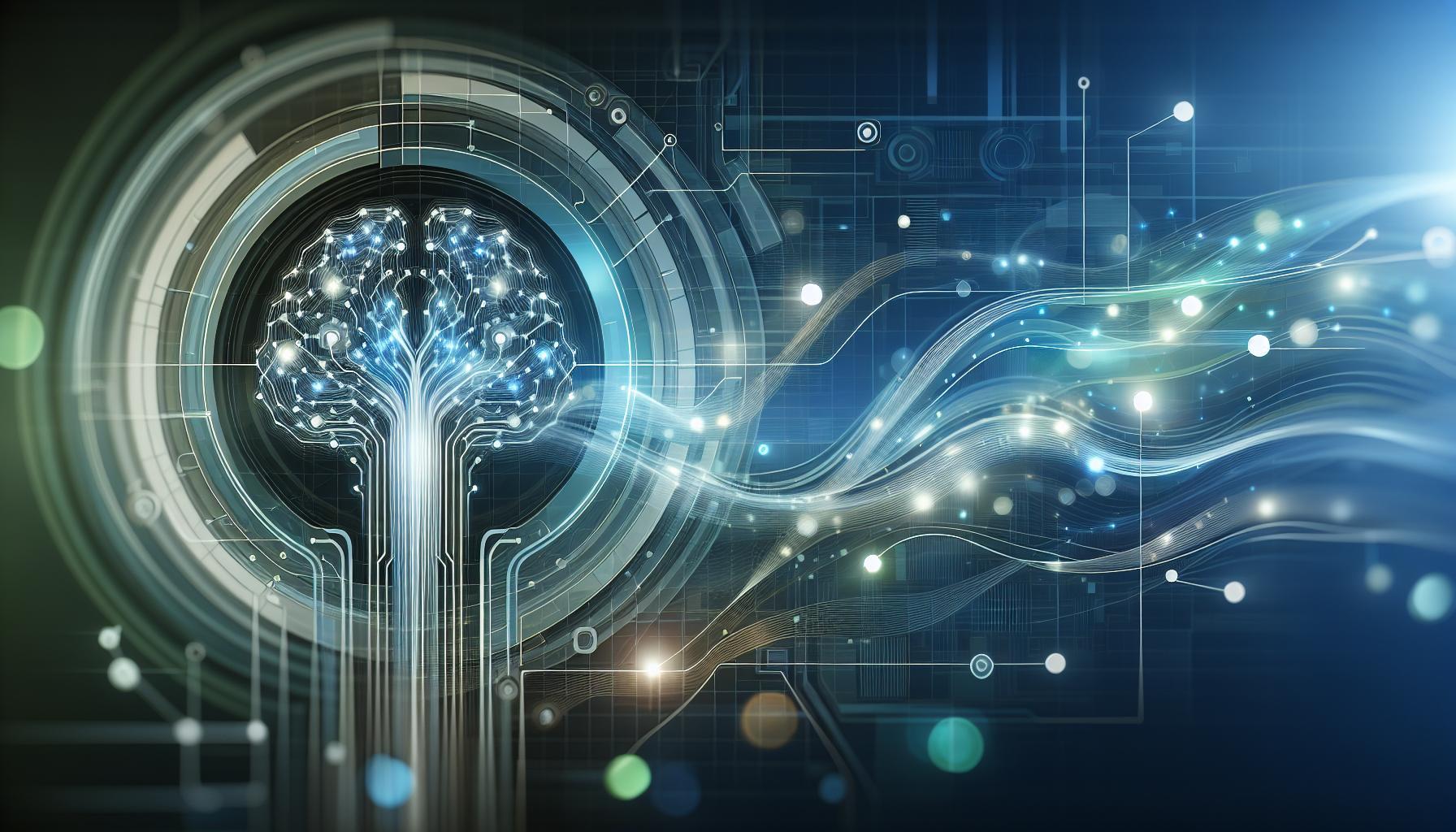In a world increasingly shaped by technology, misconceptions about artificial intelligence can lead to fear and misunderstanding. This article explores whether these digital entities are truly malevolent forces or simply tools shaped by human influence. Understanding the myths surrounding AI is crucial for fostering a more informed and balanced perspective on its impact in our lives.
Common Misconceptions about AI: What You Need to Know
Artificial intelligence often evokes a mix of fascination and fear, leading to a plethora of misconceptions that distort its true nature. A common trope is the idea that AI is inherently malevolent or supernatural, as captured in provocative discussions like “Is AI Demons? Debunking Myths and Exploring the Truth.” These myths can hinder our understanding and adoption of this transformative technology. Let’s clarify some prevalent misconceptions to foster a more grounded perspective on AI.
Understanding AI Limitations
One of the most widespread misconceptions is that AI can think or feel like a human. In reality, AI operates on algorithms and data, lacking consciousness or emotions. While it can analyze vast amounts of information faster than a human can, it does not possess creativity or moral reasoning in the human sense. It simply mimics patterns from the data it was trained on.
- AI lacks personal experience: It does not understand context or nuance like humans do.
- AI’s “intelligence” is learned: It’s reliant on the data fed to it, which can sometimes include biases.
- AI cannot generalize: What works in one field does not automatically translate to another unless specifically programmed.
AI’s Role in Society
Another myth that requires dispelling is the belief that AI will replace all human jobs. This fear overlooks the reality that AI is primarily designed to enhance human capabilities, not replace them. In sectors such as healthcare, AI-supported diagnostic tools allow professionals to make more accurate decisions, thus improving patient care rather than replacing doctors.
| Industry | AI Role | Impact on Jobs |
|---|---|---|
| Healthcare | Diagnostic assistance | Augmentation of roles |
| Manufacturing | Automating routine tasks | Shift toward skilled positions |
| Finance | Fraud detection | Enhanced decision-making |
Ethics and Governance
Lastly, the notion that AI development is unregulated and out of control is not only exaggerated but also misleading. Many governments and organizations are working tirelessly to establish ethical guidelines and regulatory frameworks to ensure responsible AI deployment. Initiatives are underway to tackle issues such as data privacy, safety, and accountability, fostering a landscape where AI technologies can thrive safely and ethically.
By clearing up these misconceptions, we can approach conversations about AI with a more informed and balanced perspective. Understanding the true capabilities and limitations of AI is crucial to leveraging its potential while addressing valid concerns raised in discussions like “Is AI Demons? Debunking Myths and Exploring the Truth.”
The Ethical Implications of AI: Balancing Innovation and Responsibility
The rapid advancement of artificial intelligence has sparked not only awe but also trepidation in various sectors of society. As businesses and individuals embrace AI technologies, the ethical implications associated with this evolution are becoming increasingly evident. Balancing innovation and responsibility requires a deep dive into the nuanced conversations surrounding AI, touching upon topics such as accountability, bias, and the potential for job displacement. These discussions are essential to demystify AI’s role and quell fears arising from misconceptions, such as those highlighted in “Is AI Demons? Debunking Myths and Exploring the Truth.”
Accountability in AI Development
One fundamental aspect of ethical AI is accountability. As machines make decisions affecting lives, industries, and economies, it becomes crucial to ascertain who takes responsibility for these outcomes. Should it be the developers, the organizations deploying AI, or the AI itself? This question is particularly pressing in scenarios involving autonomous systems, such as self-driving cars or algorithms used in judicial decisions. Missteps in these areas can lead to dire consequences, underscoring the need for well-defined accountability frameworks.
- Transparency: Ensuring that AI algorithms are understandable and their decision-making processes are visible can enhance trust and accountability.
- Regulatory Compliance: Adhering to established guidelines and frameworks can help safeguard against unethical uses of AI.
- Human Oversight: Maintaining a level of human control over AI systems, especially in critical applications, is vital to ensuring ethical standards are met.
Addressing Bias and Fairness
Another pressing ethical consideration is the prevalence of bias in AI systems. As the article “Is AI Demons? Debunking Myths and Exploring the Truth” suggests, AI can perpetuate and even exacerbate existing societal biases if not carefully designed. This raises concerns about fairness and equality, particularly in areas such as hiring practices or law enforcement.
| Type of Bias | Description | Potential Impact |
|---|---|---|
| Data Bias | Arises from skewed or unrepresentative training data. | Can lead to discriminatory practices in decision-making. |
| Algorithmic Bias | Occurs due to flawed algorithms that analyze data inaccurately. | May reinforce stereotypes and social inequalities. |
| Human Bias | Introduced by developers through intentional or unintentional design choices. | Can override fairness principles and impact outcomes adversely. |
To mitigate these risks, organizations must prioritize the creation of inclusive datasets, regularly conduct audits on AI systems, and foster diversity among their development teams. By embracing these strategies, we can work toward minimizing bias, ultimately leading to more equitable and just AI solutions.
In the quest for innovation, the ethical implications of AI demand careful consideration. As highlighted in “Is AI Demons? Debunking Myths and Exploring the Truth,” our responses to these challenges will shape society’s trajectory in the age of AI. By committing to ethical practices and fostering a culture of responsibility, we can ensure that technological advancements serve humanity rather than detract from it.
The Role of Human Oversight in AI Development: Safeguarding Against Misuse
The rapid evolution of artificial intelligence (AI) has sparked a heated debate about its potential dangers and ethical considerations. With unprecedented capabilities, AI can analyze vast amounts of data, recognize patterns, and make decisions at speeds unattainable by humans. However, without proper human oversight, these powerful tools can inadvertently contribute to significant societal issues, including privacy invasions, biased decision-making, and the potential for misuse in harmful ways. The need for a structured approach that incorporates human judgment into AI development has never been more crucial.
Understanding the Importance of Human Oversight
The integration of human oversight in AI development serves multiple purposes. First and foremost, it acts as a safeguard against the unintended consequences of autonomous algorithms. Human judgment can identify and mitigate bias in AI systems, ensuring that decisions are fair and equitable. This is particularly important in sensitive areas such as law enforcement, healthcare, and hiring processes, where biased AI outputs can have profound impacts on people’s lives.
To illustrate the significance of human intervention, consider the following examples:
- Medical Diagnostics: AI can assist in diagnosing diseases faster than human doctors. However, human expertise is necessary to verify AI recommendations, helping to catch errors that could have devastating effects on patient care.
- Content Moderation: AI tools can automatically flag and remove inappropriate content on social media platforms. Yet, human moderators play a crucial role in ensuring context is considered, thereby preventing the unjust censorship of legitimate posts.
- Autonomous Vehicles: Self-driving cars rely heavily on AI for navigation. Human oversight is essential during testing and operational phases to manage unpredictable human behaviors on the road.
Strategies for Effective Oversight
To enhance the effectiveness of human oversight in AI, a multi-faceted approach is necessary. Here are some actionable strategies:
- Establish Clear Protocols: Clearly defined protocols for monitoring and auditing AI systems can help identify potential issues before they escalate.
- Develop Interdisciplinary Teams: Incorporating experts from diverse fields—ethics, law, engineering, and social sciences—provides comprehensive oversight that accounts for the multifaceted impact of AI technologies.
- Implement Continuous Training: Regularly updating the knowledge base of employees involved in AI development ensures they remain aware of the latest ethical standards and potential misuse scenarios.
By prioritizing human oversight, organizations can not only mitigate risks associated with AI but also enhance public trust in these technologies. This aligns directly with the ongoing discourse presented in the article “Is AI Demons? Debunking Myths and Exploring the Truth,” reinforcing that the responsible development of AI hinges on our ability to blend advanced technology with human empathy and ethical considerations.
Exploring the Future of AI: Opportunities and Challenges Ahead
The rapid evolution of artificial intelligence continues to spark curious debates and discussions surrounding its potential, raising questions about the line between innovation and ethics. As we delve deeper into the narrative surrounding AI’s capabilities, a significant opportunity emerges to reshape our world for the better. Yet, alongside this potential for progress, we also encounter challenges that require critical examination. Understanding these dynamics is crucial for navigating the landscape shaped by AI’s advancements.
Opportunities in AI Development
The realm of artificial intelligence offers a plethora of opportunities that touch various sectors. Here are some key areas where AI can make a significant impact:
- Healthcare: AI algorithms can analyze vast datasets to predict patient outcomes, aiding in early diagnosis and personalized treatment plans.
- Education: Intelligent tutoring systems can cater to individual learning styles, enhancing educational outcomes and accessibility.
- Environmental Sustainability: AI can optimize resource management, reduce waste, and forecast climate patterns, contributing to more effective climate action.
- Business Efficiency: Automation of routine tasks allows organizations to refocus human talent on creative and strategic initiatives.
As illustrated above, the potential for AI to transform industries and improve quality of life is vast. However, realizing this potential comes with its own set of formidable hurdles.
Challenges in AI Implementation
While the benefits are substantial, the challenges that accompany these advancements can’t be ignored. Some pressing concerns include:
| Challenge | Description |
|---|---|
| Ethical Implications | The deployment of AI systems raises ethical questions about privacy, accountability, and bias, necessitating robust frameworks for governance. |
| Job Displacement | Automation threatens certain job sectors, creating the urgent need for workforce retraining and new job creation strategies. |
| Security Risks | AI systems can be vulnerable to misuse, such as cyberattacks or manipulation, emphasizing the requirement for stringent security measures. |
Addressing these challenges requires a collaborative effort among policymakers, technologists, and society as a whole. It’s imperative to engage in open dialogues, much like those found in discussions on “Is AI Demons? Debunking Myths and Exploring the Truth,” to bridge knowledge gaps, understand AI complexities, and ensure the technology serves humanity positively. Through thoughtful planning and ethical considerations, the future of AI can indeed be a landscape of opportunities instead of a daunting arena of challenges.
Frequently asked questions
What is the concept behind ‘Is AI Demons? Debunking Myths and Exploring the Truth’?
The phrase ‘Is AI Demons?’ is a provocative way to discuss and refute common fears and misconceptions surrounding artificial intelligence. It aims to clarify that AI, while powerful, is not inherently evil or a threat.
Many people equate advanced technology with danger, thinking of AI as malicious entities. However, understanding the reality of AI helps demystify its functions and limitations. This exploration into AI helps to confront myths such as AI being malicious and showcases its potential benefits in society. For a deeper understanding, visit our AI Myths page.
How can AI be misunderstood as a ‘demon’?
AI is often portrayed as a ‘demon’ in popular media, suggesting it has harmful motives or capabilities. This misunderstanding stems from its complex nature and rapid advancement.
Societal fears are fueled by stories of AI taking control or making unethical decisions. In reality, AI operates within set parameters defined by humans and reflects our biases. Addressing these fears can lead to more responsible AI development and usage.
Why does the myth of AI as a monster persist?
The myth of AI as a monster persists largely due to sensational media portrayals and a lack of understanding about how AI actually works. This creates a fearful narrative around technology.
Misconceptions about AI’s capabilities lead to skepticism and anxiety about its impact on society. By focusing on accurate information and the ethical implications of AI, we can counteract this narrative and promote a healthier dialogue about technology’s role in our lives.
Can AI be regulated effectively?
Yes, AI can be regulated effectively. The misconception that AI is too complex for regulation overlooks established frameworks that can ensure safe and ethical use.
Misunderstandings often arise from fears that regulation may stifle innovation. However, careful regulation can actually enhance public trust in AI and encourage responsible development, aligning technological advancement with societal values. For more details, explore our discussion on AI regulation.
What are some common myths about AI?
Common myths about AI include the belief that it is purely objective, that it will eventually surpass human intelligence, and that it can operate completely autonomously. These ideas can mislead public perception.
In reality, AI systems are influenced by the data and algorithms created by humans, which can introduce biases. Understanding and addressing these myths helps ground the conversation around AI in reality and encourages informed discussions.
Why is it important to debunk myths about AI?
Debunking myths about AI is crucial for fostering a rational understanding of its capabilities and limitations. This empowers users to engage with technology responsibly.
Informed discussions lead to better policymaking, innovation, and public engagement with AI technologies. By dispelling fears and promoting facts, we create a culture that embraces technological advancements while being mindful of potential risks.
Can artificial intelligence be unbiased?
No, artificial intelligence cannot be completely unbiased. AI systems are designed and trained using data influenced by human perspectives, which means they can inherit those biases.
This highlights the importance of ongoing evaluation and adjustment of AI systems. Instead of assuming that technology can be neutral, we should focus on understanding and mitigating biases to ensure fairer outcomes in AI applications.
Concluding Remarks
In conclusion, our exploration of the myths surrounding artificial intelligence reveals significant misconceptions that often cloud public understanding. We have debunked the notion that AI can be entirely objective or unbiased, highlighting how biases can inadvertently creep into algorithms and affect outcomes—underscoring the importance of addressing these biases while also focusing on broader implications of AI use [[1]]. Furthermore, we’ve clarified the ambiguity of the term “artificial intelligence,” illustrating the necessity for precise language when discussing this rapidly evolving field [[2]]. Finally, we tackled the hype surrounding the idea of imminent superintelligent AI, emphasizing the need for realistic expectations grounded in current technology and its limits [[3]].
As you continue your journey into the fascinating world of AI, we encourage you to challenge common assumptions, stay informed about advancements, and engage in discussions that shape the future of this transformative technology. There is always more to learn and discover, so dive deeper into these subjects and explore how AI impacts our lives today and in the future.





